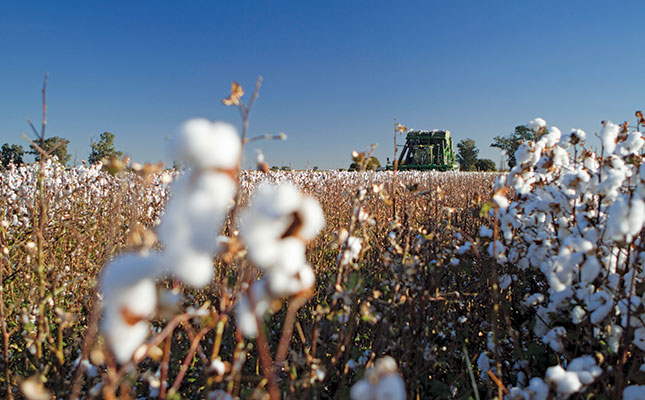
While global demand for local cotton is increasing, declining volumes remains a problem in South Africa. According to the latest national cotton crop estimate, the cotton crop would be about 13% smaller in 2022 than in the previous season.
The harvest was estimated at 68 000 lint bales, according to a statement by Cotton South Africa (Cotton SA). Farmers had suffered considerable damage from the current sustained rain as well as hail.
Producers in North West had lost almost half of their estimated crop due to heavy rain, while the Northern Cape had also suffered damage. Farmers in Limpopo and Mpumalanga had also experienced periods of drought since January 2022.
The expected yield of seed cotton under irrigation for the current season was about 4 140kg/ha, in contrast to the previous season’s figure of just over 4 500kg/ ha. For dryland crops, the expected yield was 1 500kg/ ha, compared with the previous season’s almost 1 470kg/ha.
Jozeph du Plessis, a cotton farmer near Schweizer-Reneke, told Farmer’s Weekly that due to local prices being derived from the global cotton price, farmers could expect record prices of up to R12 000/t.
“The problem, however, is that we urgently need new seed technology. We currently have access only to long-grower seed, which isn’t suited to our production conditions. Short-grower seed is vital to allow expansion.
“We now need to plant in mid-November at the latest to ensure that the crop is exposed to sufficient heat units before harvesting. “With the long-grower cultivars, this poses a serious risk,” he said.
Hennie Bruwer, CEO of Cotton SA, said in the statement that access to new seed technology to ensure “shorter grower cotton” remained a priority, and Cotton SA was investigating various funding opportunities in this regard.
“Cotton futures remain close to an 11-year high amid expectations of lower supplies due to drought in the US planting [regions] and stronger demand for cotton.
“Rainfall has been very low since early January in the north-western part of Texas, which accounts for about 40% of all US cotton production.
“Also, the rising cost of pesticides may limit the growth in US acreage. Globally, the cotton price is derived from the New York Futures Exchange and the Cotlook Indices.
“The situation in the US, therefore, has a significant impact on the baseline price of the commodity,” Bruwer said.









